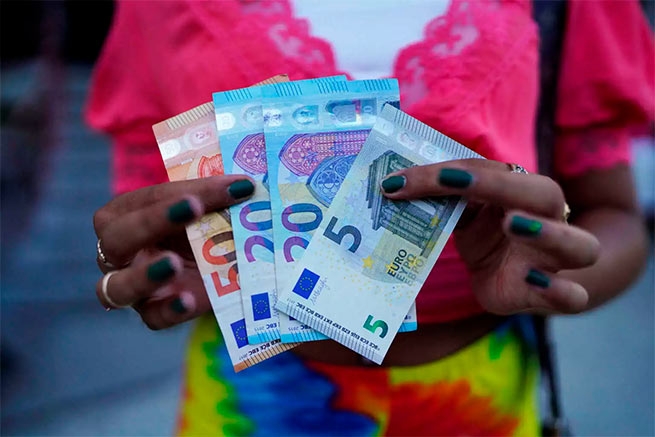June 1 morning in Athens, two foreigners, one from Ethiopia and the other from the Congo, were arrested for dealing counterfeit banknotes and possession of documents of third parties.
After verification of Attica Security’s information, the defendants were arrested for circulation of counterfeit banknotes, which they then put into circulation.
During a search carried out in the homes of the accused in Athens, among other things, the following were discovered and confiscated:
- 66 counterfeit 100 euro banknotes
- 115 counterfeit 50 euro banknotes
- 205 counterfeit 20 euro banknotes
- 38 counterfeit 5 euro banknotes
- third party residence permit
- numerous third-party passport-style photographs
- 4 mobile phones
The arrested were taken to the criminal prosecutor’s office of Athens.
How to check EURO banknotes for authenticity?
Currently, the following denominations of 5-200 euros are in circulation. In some countries, 200 euros are not issued, but everywhere they are considered legal tender. The Euro is today the official currency of 19 EU countries. Each banknote has its own color and size, each of them depicts windows and gates (on the front side) and bridges (on the back side).
Quick check
Basic authentication includes visual inspection and “feeling” of the euro bill.
-
if you look at the bill against the light, the banknote shows watermarks, a protective strip with the denomination of the bill and elements of numbers, which, when added together, form the denomination of the bill;
-
at an angle, some elements (hologram and golden stripe) change color;
-
to the touch, the euro banknote should be dense and rough, since cotton paper is used in its production.
More detailed check
There are many ways to distinguish a fake from a real banknote. Everyone can choose the most convenient way to check banknotes for themselves:
- The easiest way to distinguish a counterfeit bill is by touch. Counterfeit banknotes are printed on smooth soft paper, so the relief thickenings on the banknote are not palpable, they simply do not exist.
- Also, genuine banknotes have a specific crunch, because they are made from natural material – cotton fiber.
- You need to check the bill for light and look for the presence of watermarks. They appear on both sides of the banknote. The euro has three watermarks, which you will clearly see if you hold the bill against the light when checking for authenticity.
- Tilt the banknote and pay attention to the hologram: fake holograms do not change the image when the banknote is tilted, they are dull and without visual effects.
- Counterfeit banknotes glow brightly under an ultraviolet lamp.
- A security thread is embedded in a real bill, which looks like a dark stripe. The word “euro” and the denomination of the banknote are very clearly visible on it. The security thread is magnetic. There is no magnetic protection on the fake.
- For the visually impaired, there are additional signs along the edge of the 200 euro and 500 euro banknotes, which are well defined by touch.
- European banknotes are micro-images that can be viewed under a magnifying glass.
- You can check the serial number of a banknote from 11 digits and a Latin letter. On European banknotes, the size of the letter is always smaller than the size of the numbers.
For the most meticulous – detailed instruction from Eurobank.







More Stories
Crazy motorcyclist ran 12 red lights
Vravrona: the corpse of a premature baby was found in a garbage dump with head injuries (video)
AI at the service of hackers – Greek experts warn (video)